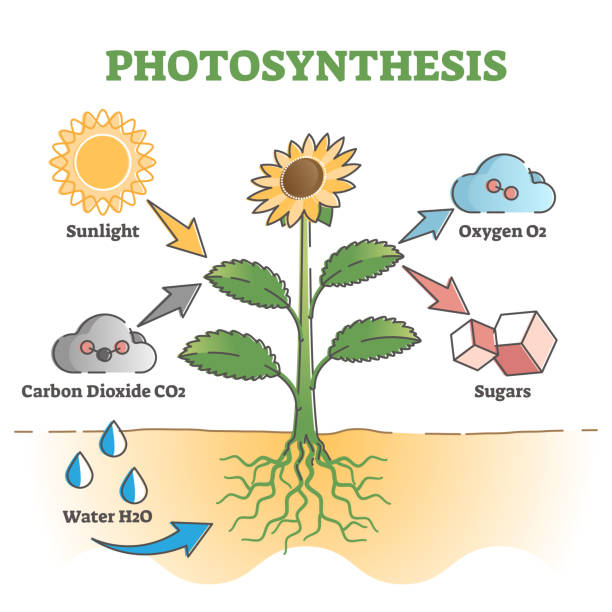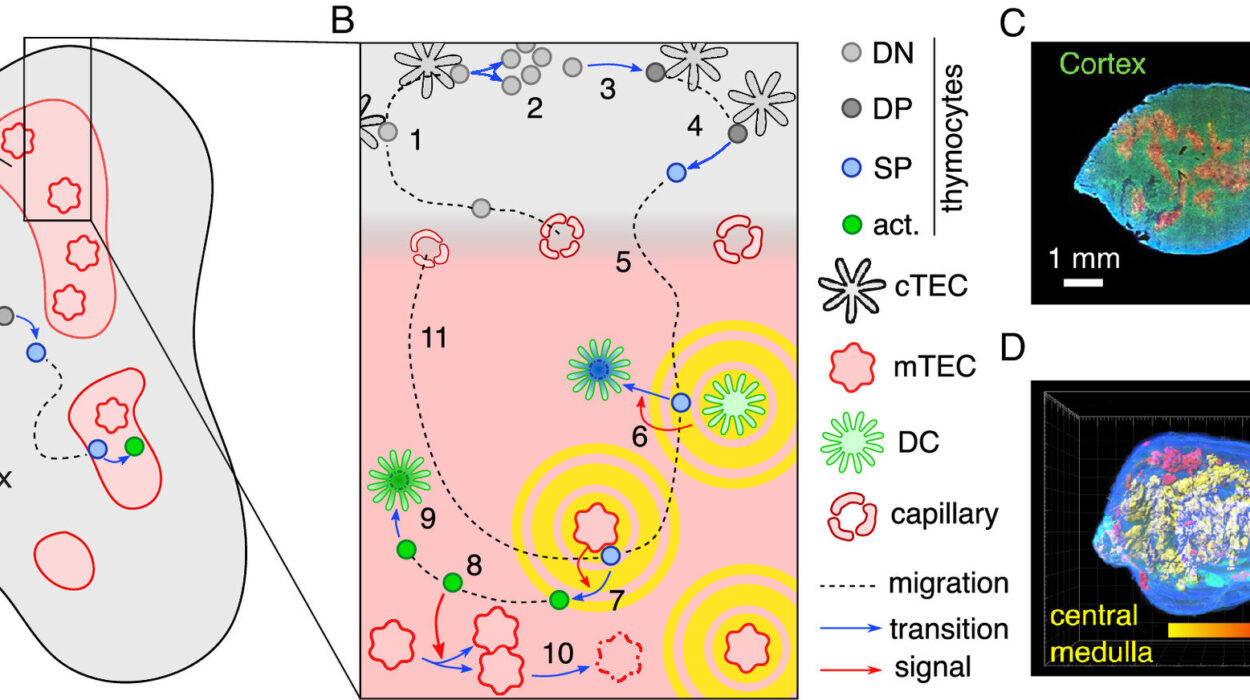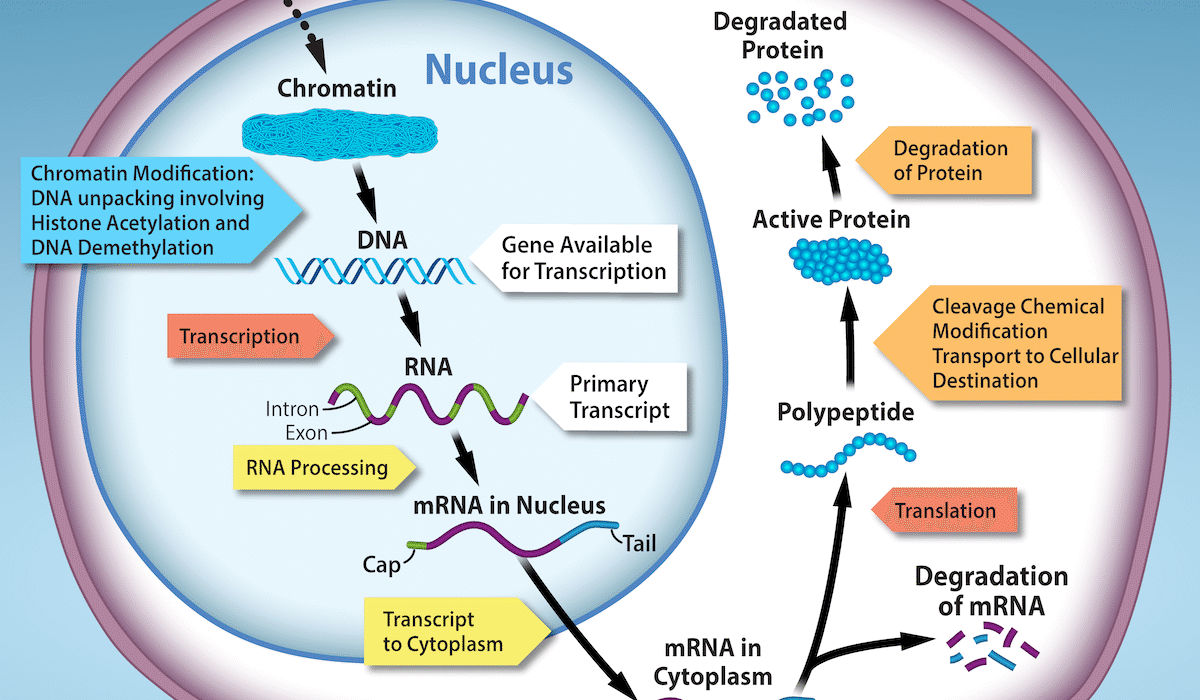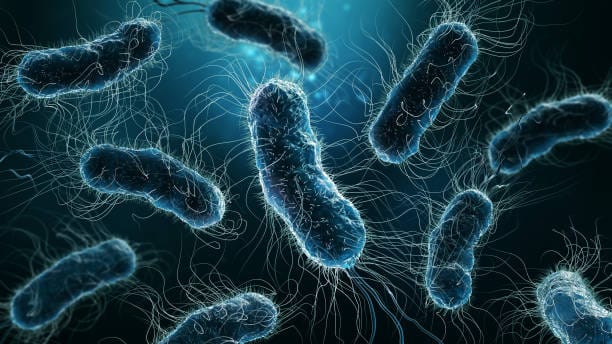Imagine walking through a lush forest, the sunlight streaming through the canopy, painting a dance of golden rays on the forest floor. Every leaf, from the tallest tree to the smallest blade of grass, pulses with life—thanks to a green pigment called chlorophyll. Though barely visible to the naked eye in its molecular form, chlorophyll is the unsung hero of life on Earth. Without it, the food chain would collapse, oxygen would diminish, and life as we know it would be unrecognizable. Why? Because chlorophyll plays a central, irreplaceable role in photosynthesis—the miraculous process by which plants, algae, and certain bacteria convert sunlight into energy.
In this deep dive, we’ll uncover the fascinating biology and chemistry behind chlorophyll, trace its evolutionary roots, understand how it works in photosynthesis, explore the different types and structures of chlorophyll, and reveal the science behind why it’s green. We’ll also highlight its broader ecological significance, agricultural importance, and emerging applications in bioengineering and artificial photosynthesis. Buckle up—we’re diving into the vibrant, glowing world of chlorophyll.
The Power of Photosynthesis
Photosynthesis is a biochemical process through which organisms like plants, algae, and cyanobacteria convert light energy into chemical energy. At its core, it transforms carbon dioxide (CO₂) from the air and water (H₂O) from the soil into glucose (C₆H₁₂O₆), a simple sugar that fuels cellular activities. Oxygen (O₂) is released as a byproduct. This process sustains life on Earth, feeding not only the plants themselves but also animals and humans who rely on plants for oxygen and food.
The generalized formula for photosynthesis is:
6CO₂ + 6H₂O + light energy → C₆H₁₂O₆ + 6O₂
Photosynthesis occurs primarily in plant leaves inside organelles called chloroplasts. These chloroplasts house chlorophyll—the molecule at the heart of the process. But chlorophyll is more than a pigment; it’s a molecular antenna, a photon trap, and an energy converter. Let’s find out how.
Chlorophyll: The Green Alchemist
Chlorophyll is a magnesium-containing, light-absorbing molecule found inside the chloroplasts of plant cells. Its primary function is to absorb light—specifically, wavelengths from the blue and red ends of the visible spectrum—and convert it into energy. Chlorophyll reflects green light, which is why most plants appear green to our eyes.
Structurally, chlorophyll is a porphyrin—a complex ring-shaped molecule with a central magnesium ion. This structure is highly efficient at capturing and transferring light energy. Chlorophyll molecules are embedded in the thylakoid membranes of chloroplasts, where they form part of large protein-pigment complexes known as photosystems.
There are several types of chlorophyll, but chlorophyll a is the principal pigment involved in the light-dependent reactions of photosynthesis. Other variants, like chlorophyll b, c, and d, serve as accessory pigments that broaden the range of light a plant can use.
Light Absorption: The Gateway to Energy
Light is composed of photons, packets of energy that travel in waves. Not all light is absorbed equally—each pigment absorbs light of specific wavelengths. Chlorophyll a absorbs light in the violet-blue and orange-red regions of the spectrum, while chlorophyll b complements this by absorbing light in the blue and red-orange areas. Together, they allow plants to harness a broader spectrum of sunlight.
When chlorophyll absorbs a photon, it becomes excited—literally. The energy from the photon boosts one of its electrons to a higher energy level. This high-energy electron is then transferred to an electron acceptor in the photosynthetic electron transport chain, setting off a cascade of reactions that ultimately produce ATP (adenosine triphosphate) and NADPH, the energy-rich molecules used in the Calvin cycle to produce glucose.
Without chlorophyll, this initial energy capture would be impossible. Chlorophyll is the molecule that bridges light and life.
Photosystems and the Light Reactions
Within the thylakoid membranes, chlorophyll doesn’t act alone. It’s organized into two main complexes: Photosystem I (PSI) and Photosystem II (PSII). These structures contain hundreds of chlorophyll molecules arranged like a solar panel, along with proteins and other pigments.
In PSII, chlorophyll absorbs light energy and uses it to split water molecules into hydrogen ions, electrons, and oxygen. This process is known as photolysis. The electrons travel down an electron transport chain, releasing energy that pumps protons into the thylakoid space and helps form ATP. The electrons eventually reach PSI, where they are re-energized by another photon and used to reduce NADP⁺ to NADPH.
This light-dependent phase, powered by chlorophyll, produces both ATP and NADPH—molecules that fuel the subsequent dark reactions (Calvin cycle), where carbon is fixed into sugars.
Chlorophyll in the Calvin Cycle: Indirect but Crucial
Though chlorophyll’s main role is in the light reactions, its influence carries into the Calvin cycle. The ATP and NADPH it helps produce are used to drive the chemical reactions that convert CO₂ into glucose. The Calvin cycle doesn’t require light directly, but it depends entirely on the energy captured by chlorophyll during the light reactions.
Thus, chlorophyll is like the spark plug in a car—it initiates the chain of events that lead to energy production. Without chlorophyll, the entire machinery of photosynthesis would grind to a halt.
Different Shades of Chlorophyll
Though chlorophyll a is the primary molecule involved in photosynthesis, other forms serve supporting roles.
- Chlorophyll b is found in green algae and plants. It expands the range of light absorption and funnels energy to chlorophyll a.
- Chlorophyll c and d are found in various types of algae, aiding in light harvesting under different ecological conditions.
- Chlorophyll f, a relatively recent discovery, absorbs far-red light and may allow certain cyanobacteria to photosynthesize in low-light environments like deep oceanic vents or shaded canopies.
These variants allow photosynthetic organisms to adapt to a wide range of environments, optimizing their energy capture in high-light, low-light, or specialized niches.
Why Is Chlorophyll Green?
It all comes down to absorption and reflection. Chlorophyll absorbs blue (around 430 nm) and red (around 660 nm) wavelengths of light very efficiently but reflects green light (around 550 nm). Our eyes detect this reflected green light, making plants appear green.
But why doesn’t chlorophyll absorb green light? One hypothesis is that early life on Earth evolved under specific lighting conditions where red and blue light were more abundant. Another theory suggests that absorbing green light could result in overheating or over-excitation, which might damage the photosynthetic apparatus.
Whatever the reason, chlorophyll’s unique light-absorption profile has profound implications for the energy balance of ecosystems and the appearance of plant life.
Chlorophyll and Evolution: A Billion-Year Journey
Chlorophyll has ancient origins. Cyanobacteria—photosynthetic bacteria—were among the first organisms to harness chlorophyll for light capture, more than 2.5 billion years ago. Their oxygenic photosynthesis dramatically altered Earth’s atmosphere during the Great Oxygenation Event, paving the way for complex life.
Later, endosymbiosis brought chlorophyll into eukaryotic cells when a cyanobacterium was engulfed by a primitive host cell. This event gave rise to chloroplasts and allowed plants and algae to inherit the photosynthetic legacy. The universality of chlorophyll a across diverse species speaks to its evolutionary success. It’s a molecular fossil that continues to power life across Earth.
Chlorophyll’s Broader Ecological Role
Chlorophyll’s role in photosynthesis has ripple effects that shape the entire biosphere. Every green leaf, from towering redwoods to microscopic algae, absorbs sunlight and fixes carbon thanks to chlorophyll. This photosynthetic activity forms the base of the food web, supporting herbivores, carnivores, and decomposers alike.
Furthermore, chlorophyll-driven photosynthesis regulates Earth’s climate. Plants absorb CO₂, a greenhouse gas, helping to mitigate climate change. Forests, wetlands, and oceans act as carbon sinks, largely due to the chlorophyll-laden organisms thriving in them.
On a planetary scale, chlorophyll contributes to the “greening” effect observable from space. Satellites track chlorophyll concentration to monitor agricultural productivity, forest health, and oceanic plankton blooms—key indicators of ecosystem function.
Chlorophyll in Agriculture and Food Production
Agriculture owes much to chlorophyll. The greener the leaf, the more photosynthesis occurs, translating into higher crop yields. Farmers monitor leaf chlorophyll levels to assess plant health, detect nutrient deficiencies (especially nitrogen), and optimize fertilizer use.
Chlorophyll content is also used as an indirect measure of drought stress, pest damage, or disease onset. Remote sensing technologies and handheld chlorophyll meters help modernize farming practices, allowing for precision agriculture.
Furthermore, chlorophyll finds use as a food additive, coloring agent, and health supplement. Though it plays no role in photosynthesis once extracted, its antioxidant and anti-inflammatory properties have sparked interest in nutrition science.
Artificial Photosynthesis: Learning from Chlorophyll
Chlorophyll has inspired scientists to mimic nature’s energy conversion through artificial photosynthesis. The goal is to develop systems that use sunlight to split water and generate hydrogen fuel—a clean energy alternative.
Researchers study the structure and function of chlorophyll to design synthetic molecules and photocatalysts that replicate its light-absorbing capabilities. While artificial systems still lag behind nature’s efficiency, chlorophyll remains a blueprint for a sustainable energy future.
In medicine, chlorophyll analogs are explored for photodynamic therapy, where light-activated compounds target cancer cells. The principles that make chlorophyll effective in plants—light absorption and electron transfer—are being repurposed to fight disease.
Chlorosis: When Chlorophyll Breaks Down
The absence or degradation of chlorophyll leads to a condition called chlorosis, where leaves turn yellow or pale. This often signals stress, nutrient deficiencies, disease, or environmental damage. Nitrogen, magnesium, and iron deficiencies are common culprits, as all are essential for chlorophyll synthesis.
Chlorosis reduces photosynthetic capacity and compromises plant health. Understanding and managing chlorophyll levels is crucial for maintaining crop productivity and ecological balance.
The Mystery and Beauty of Autumn
One of chlorophyll’s most poetic roles is in the changing colors of autumn. As days shorten and temperatures drop, chlorophyll breaks down in deciduous trees, revealing hidden pigments like carotenoids (yellow/orange) and anthocyanins (red/purple).
This seasonal choreography is a direct consequence of chlorophyll’s dominance fading. It’s a reminder that even as life slows down for winter, the molecular dance of photosynthesis never truly stops—it simply hibernates.
The Future of Green Energy
Chlorophyll is more than just a pigment—it’s a paradigm. Its efficiency, adaptability, and central role in the energy cycle of life continue to inspire innovation across disciplines. Whether it’s powering ecosystems, guiding climate science, or sparking breakthroughs in green technology, chlorophyll is a symbol of nature’s ingenuity.
As we confront global challenges like food insecurity and climate change, understanding chlorophyll’s role isn’t just academic—it’s essential. We must learn from the leaves and mimic their wisdom if we are to build a sustainable future.
Conclusion: The Silent Sentinel of Life
In the silent language of molecules, chlorophyll speaks volumes. With every sunrise, it awakens to harvest photons, generate fuel, release oxygen, and sustain life. Its green signature decorates landscapes, supports civilizations, and fuels the very breath we take. And yet, we rarely stop to appreciate the miracle happening in every leaf, every second.
Chlorophyll’s role in photosynthesis is more than a biological process—it’s a life-giving force, a molecular symphony, a gift from nature’s chemistry set. It connects the sun to our survival, weaving energy into life with each flicker of light. To understand chlorophyll is to glimpse the engine of life itself—and to realize just how much we owe to the green beneath our feet.






